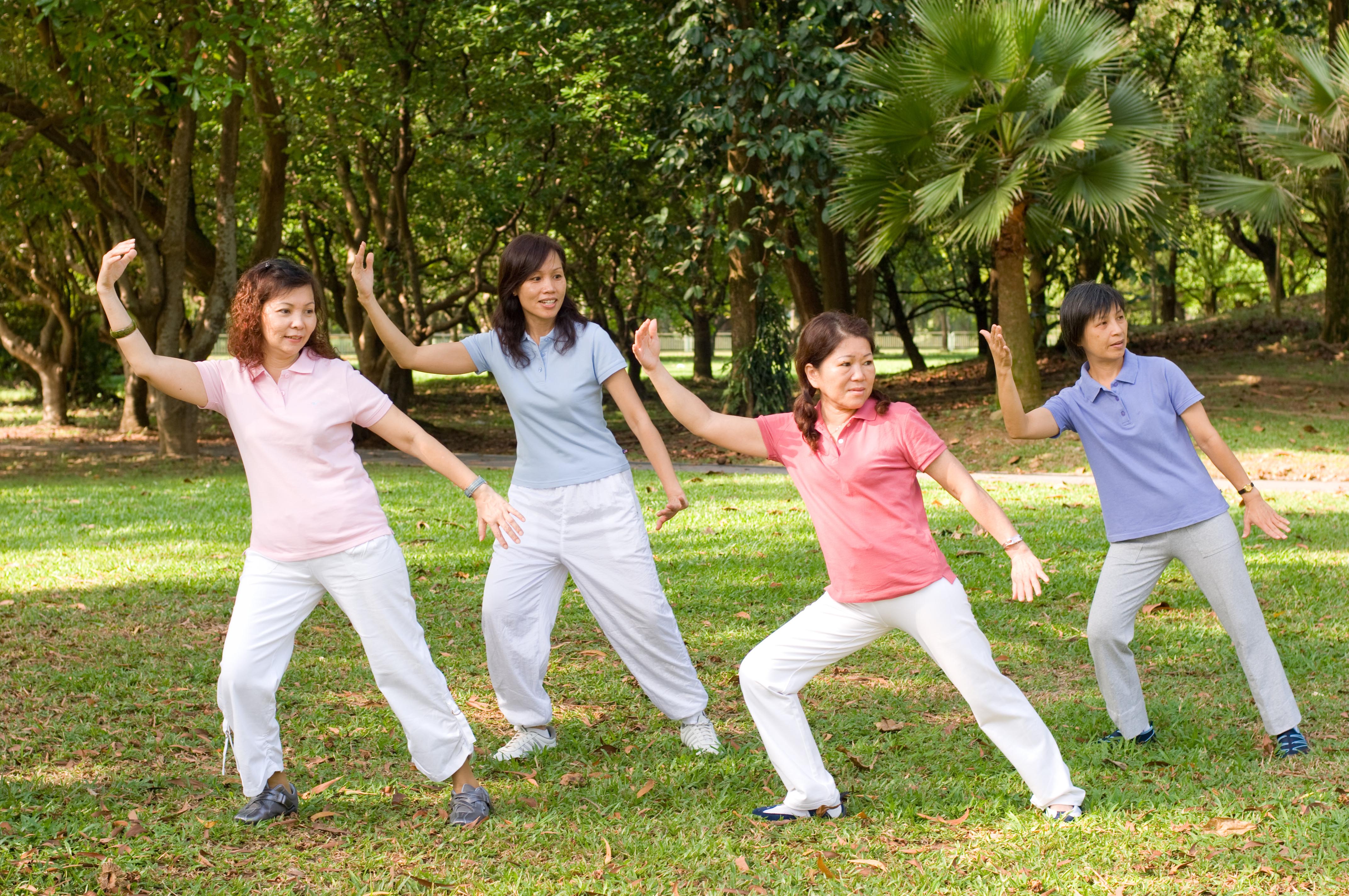 Tai Chi is a great form of relaxing movement that is great for people with pain. Marnie
Tai Chi is a great form of relaxing movement that is great for people with pain. Marnie
Just like judo, karate, and kung fu, Tai -chi is considered a martial art. It does not involve high energy movements like kicking, punching, and fighting. It uses slow, steady movements that enhance relaxation, stress reduction, and inner peace while also being physically challenging the body. There are different types of tai chi that can be accommodative to almost anyone. The most popular types are yang, wu, and tai chi chih. Yang is physically challenging because the knees are kept bent with a wide stance at the feet during the movements. Wu is like yang, except the knees are just slightly bent with the feet closer together. Wu is best for beginners and people with balance problems. Tai chi chih style focuses on keeping weight distributed evenly between both feet, so it tends to be easier on the body.
The Chinese believe that practicing tai chi can slow the aging process, increase flexibility, strengthen muscles and tendons, and also help treat high blood pressure, heart disease, arthritis, digestive issues, skin diseases, depression and even cancer! However, these claims need to be studied scientifically. Scientists do know that practicing tai chi improves balance, fear of falling, strength and endurance, aerobic capacity, walking, fibromyalgia, and stress.
- Balance: Tai chi helps with balance by shifting weight in legs while the upper body is steadily moving also. Researchers found that balance improved significantly after only performing tai chi for 8 weeks.
- Fear of falling: Tai chi aids in increasing self-confidence when it comes to falling with the elderly. This self-confidence also gives them the added benefit of motivation to continue exercising. Win win!
- Strength and endurance: Muscle strength, endurance, and flexibility were all improved in the upper and lower body after practicing tai chi for only 12 weeks.
- Aerobic capacity: Those who do tai chi have greater aerobic capacity when compared to sedentary people of the same age, even though the movements are slow and steady.
- Walking: As we age, walking speed seems to slow down. With tai chi, research showed people actually take more steps!
- Fibromyalgia: Fibromyalgia can be debilitating, depending on severity. However, tai chi decreased symptoms of fibromyalgia and therefore, enhances quality of life.
- Stress: Practicing deep breathing during tai chi exercises helps with finding inner peace and calmness because of the mental concentration with physical movements.
Other reasons to practice tai chi include: low impact movements, less risk of injury, can be done anywhere at your own pace, non-competitive, and can be done alone or with friends. So, find some videos to do it at home, or go to your local gym and ask about tai chi classes offered, and grab a friend and get moving!
Melissa Hickman SPT
The material on this site is for informational purposes only and is not intended to diagnose of suggest treatment for individuals. Consult your health care provider regarding your specific needs.